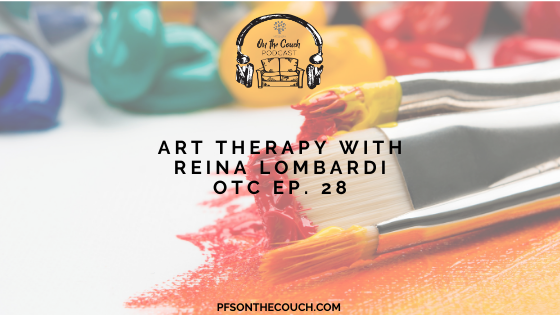OTC Ep. 28 – Art Therapy With Reina Lombardi


Show Notes: Art Therapy with Reina Lombardi
In this episode, John talks with Art Therapist Reina Lombardi about the benefits of this therapeutic approach for clients of all ages. Art therapy has benefits for a variety of diagnoses, including anxiety, depression, PTSD, substance abuse, and more. Listen and learn more about this exciting specialty in the field of mental health counseling.
Meet Reina Lombardi
Reina Lombardi is the Owner and Founder of Florida Art Therapy Services in Ft. Myers, FL. She is a registered and board certified Art Therapist and an Art Therapy Certified Supervisor. She is a Licensed Mental Health Counselor, as well as a Licensed Mental Health Supervisor. Reina is the former treasurer of the Florida Art Therapy Association and has contributed chapters on Art Therapy to books such as “Integrating Expressive Arts & Play Therapy: A Guide for Practitioners and Educators” and “Digital Art Therapy Applications.”
Show Summary
What is Art Therapy?
- Art Therapy is Mental Health Counseling combined with artistic development and education. It combines Psychology and Art.
- Art Therapists have a background in both Psychology and in Art
- The approach varies depending on the counseling framework of the therapist and the needs of the client
- Art Therapy is extremely adaptable to various counseling approaches and client needs
What are some myths about Art Therapy?
- The number one myth is that any counselor can do Art Therapy. In fact, Art Therapy is a highly specialized field, and Art Therapists receive extensive specialized training. Sometimes Art can bring out things that have been hidden by our own psychological defenses, and should only be facilitated by a trained professional
Are there certain diagnoses that Art Therapy is especially helpful in treating?
- Art Therapy can benefit all people in some way because being creative is part of being human
- If a client is exceptionally resistant, it tends to not be as effective, but this is true for all counseling.
- Many times, initial hesitancy can be overcome once a client has tried Art Therapy. Many comment that it was more helpful than they thought it would be
Do you need to have artistic ability to participate in Art Therapy?
- Art therapy is an opportunity to explore
What are some examples of Art Therapy usefulness?
- Substance Abuse: the goal is to make the client uncomfortable so that they can become ultimately more comfortable with being uncomfortable
- Children/Teens in crisis: Done in a group at the hospital’s Crisis Unit; the goal is to help them feel comfortable and explore their coping skills, family dynamics, personal identity, interpersonal relationships, and to express themselves and communicate what’s going on
What if a person expresses negative/dark themes in their artwork? Should they be concerned?
- Art Therapists don’t recommend saying “No, you shouldn’t express yourself in this way,” which leads to shame and is counterproductive
- If a person seems “stuck” in a negative outlook, the therapist can help them use art to get “unstuck.” Although negative emotions may be expressed in artwork, this is an important part of the process of getting “unstuck.” The therapist may help guide them and introduce alternatives or help them to realize a different focal point ie: can we add a new color to your painting? How can we introduce a little more light, even if it’s only a shade lighter?
What is The House Tree Person?
This is a common assessment in the field, which was not designed by an Art Therapist, that many people have heard of. The basic idea is that a client draws a picture, and the therapist analyzes it by observing common themes and symbols. This is not an accurate way to assess therapeutic artwork because it involves the therapist projecting their own interpretation onto the artwork. More meaningful is what the symbols/themes mean to the individual client. However, Art Therapists can note reoccurring themes or symbols and point them out to the client/help them explore what they mean to them.
Do you give homework in Art Therapy?
- Yes, varies by client
- Also recommend journaling
- Dialoging with the Image is often helpful. This enables the client to use the art to explore their feelings. They say something to the picture, and then they imaging how the picture would respond. For example: “What do you have to tell me that I don’t know yet?” or “What are you afraid will happen if______.”
What advice do you have for people interested in going in to the field of Art Therapy as a career?
- Art Therapy is rewarding and challenging
- Decide where you want to practice—states have different requirements
- Which theory of counseling fits you best—different schools focus on different treatment modalities. Decide what connects with who you are and how you’d like to practice?
- Get a Bachelor’s Degree—dual major in both Psychology and Art
- Choose a Graduate School program; Master’s Degree is required to be an Art Therapist
- After completing your Master’s, you’ll need to begin the credentialing process and complete supervision hours with a Licensed/Certified supervisor.
To contact Reina, please visit her website www.floridaarttherapyservices.com
or email her at [email protected]
